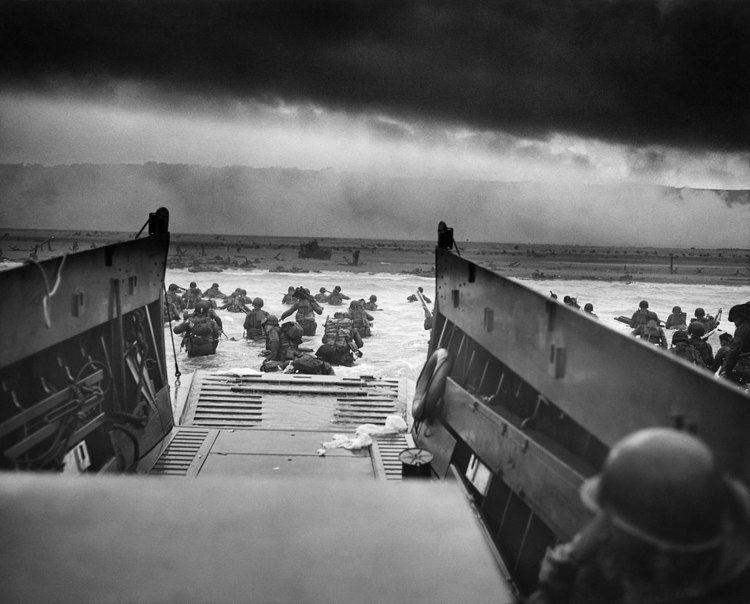Created 6 June 1944 | ||
 | ||
Similar Office at Night, Raising the Flag on Iwo Jima, The Falling Soldier | ||
Taxis to Hell – and Back – Into the Jaws of Death is a historic photograph taken on June 6, 1944, by Robert F. Sargent, a chief photographer's mate in the United States Coast Guard. It depicts U.S. Army's 1st Infantry Division soldiers disembarking from an LCVP (Landing Craft, Vehicle, Personnel) from the U.S. Coast Guard-manned USS Samuel Chase at Omaha Beach during the Normandy Landings in World War II.
Contents
Background
The photograph was taken by Chief Photographer's Mate Robert Sargent during the troop landing phase of Operation Neptune, the naval component of the Operation Overlord Normandy landing commonly known as D-Day. Neptune was the largest combat operation performed by the United States Coast Guard in American history.
The Higgins Boat depicted in the photograph had departed from the attack transport USS Samuel Chase about 10 miles (8.7 nmi; 16 km) from the coast of Normandy at around 5:30 AM. Waves continuously broke over the boat's square bow, and the soldiers inside were drenched in cold ocean water.
The photograph was taken at 7:40 AM local time. It depicts the soldiers departing the Higgins boat and wading through waist-deep water towards the "Easy Red" sector of Omaha Beach. In all the Samuel Chase lost six landing craft on D-Day; four foundered near the beach, one was “impaled” by a beach obstacle, and another sunk by enemy gunfire.
In popular culture
The image was one of the most widely reproduced photographs of the D-Day landings. The original photograph is stored by the United States Coast Guard Historian's Office.
The iconic image was evoked in the 1998 Hollywood film Saving Private Ryan, and appears on the cover of Stanley Lombardo's 1997 English translation of the Iliad as a symbol of the universality of war.
Origin of the phrase
The phrase "into the jaws of Death" in the photograph's title comes from a refrain in The Charge of the Light Brigade, an 1854 narrative poem by Alfred, Lord Tennyson about the Charge of the Light Brigade at the Battle of Balaclava during the Crimean War.
